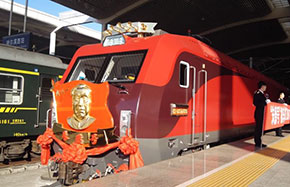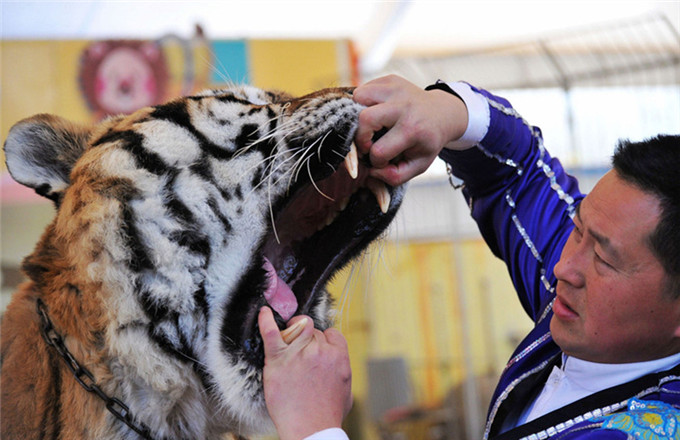'Knife painting' discovered in city of Dunhua
Metal scrapers, paint brushes, a piece of foam, a wood chip, pieces of small cloth.
Such modest materials might look like junk, but in the eyes of some painters in Northeast China's Jilin province, especially in a small city of Dunhua, they are precious.
Seldom used in other paintings, the tools add or reduce colors, creating sepia paintings that look so real it seems a landscape appears in front of your eyes.
Called knife painting after the main tool used, it is a new genre in China discovered in the 1950s that became popular in the 1970s.
Painters use scrapers instead of a paintbrush. Under the magic hands of knife painting masters, it gives the character of oil painting not only rich color, but also a sense of traditional Chinese paintings with poetic sensuality.
Data from the Dunhua Culture Bureau show that more than 2,000 people now work in knife painting. There are about 20 big studios creating the work in Dunhua.
Almost anyone in the city can tell the story of its discovery.
"The founder of knife painting is master Song Wanqing, who invented the genre when he was a worker painting on furniture in a factory," said Xu Jiachi, himself a master in Dunhua who created a 100-meter-long work in Yanbian Korean autonomous prefecture.
"One day he was concentrated on painting on furniture and by accident a drop of oil paint fell and stained the painting," said Xu.
"Song was desperate to fix it and took a scraper to remove the oil paint. To his surprise, instead of scratching that ruined the whole painting, it came off with a totally unexpected yet marvelous effect."
Xu said the accident then inspired him, and after countless attempts with the new tool to scratch off the color, scenery such as rivers and clouds looked more realistic and full of feeling. His works were selected for exhibitions at the National Art Museum in 1987. One was collected by Wang Meng, former head of the Ministry of Culture.
Dunhua citizens also showed great interest in the new technique.
To pass on his craft, Song organized more than a dozen classes with the support of the local government. The first group of 400 students became core members who then promoted the craft nationally and even worldwide. Many themselves became well-known masters.
With the support of Lin Baojun and other well-known artists such as Xu Jiachi, Wang Ying, Song Junjie and Yan Guocheng, knife painting has become an important cultural industry in Dunhua after six decades of development.
Lin Baojun, vice-director of the China Knife Painting Association, has received many students from across China for free teaching and opened his door to disabled and laid-off workers who want to learn.
"These are many other Chinese traditional art forms that are in danger of being lost without inheritors, which is really a big pity. As long as people like to learn, I will teach them. To give the art form lasting vitality is my top responsibility," he said.
Wang Ying, 46, another well-known knife painter in Dunhua, is also keen on cultivating students.
"Knife painting originated from painting on furniture, so many artists still look down and consider it a lower art. To promote the art form further and longer, we must improve the quality of professionals," she said.
hanjuhong@chinadaily.com.cn
|
Seventy-two-year-old Su Yizhong, the oldest student in artist Lin Baojun's class, works on his knife painting. Feng Yongbin / China Daily |



















